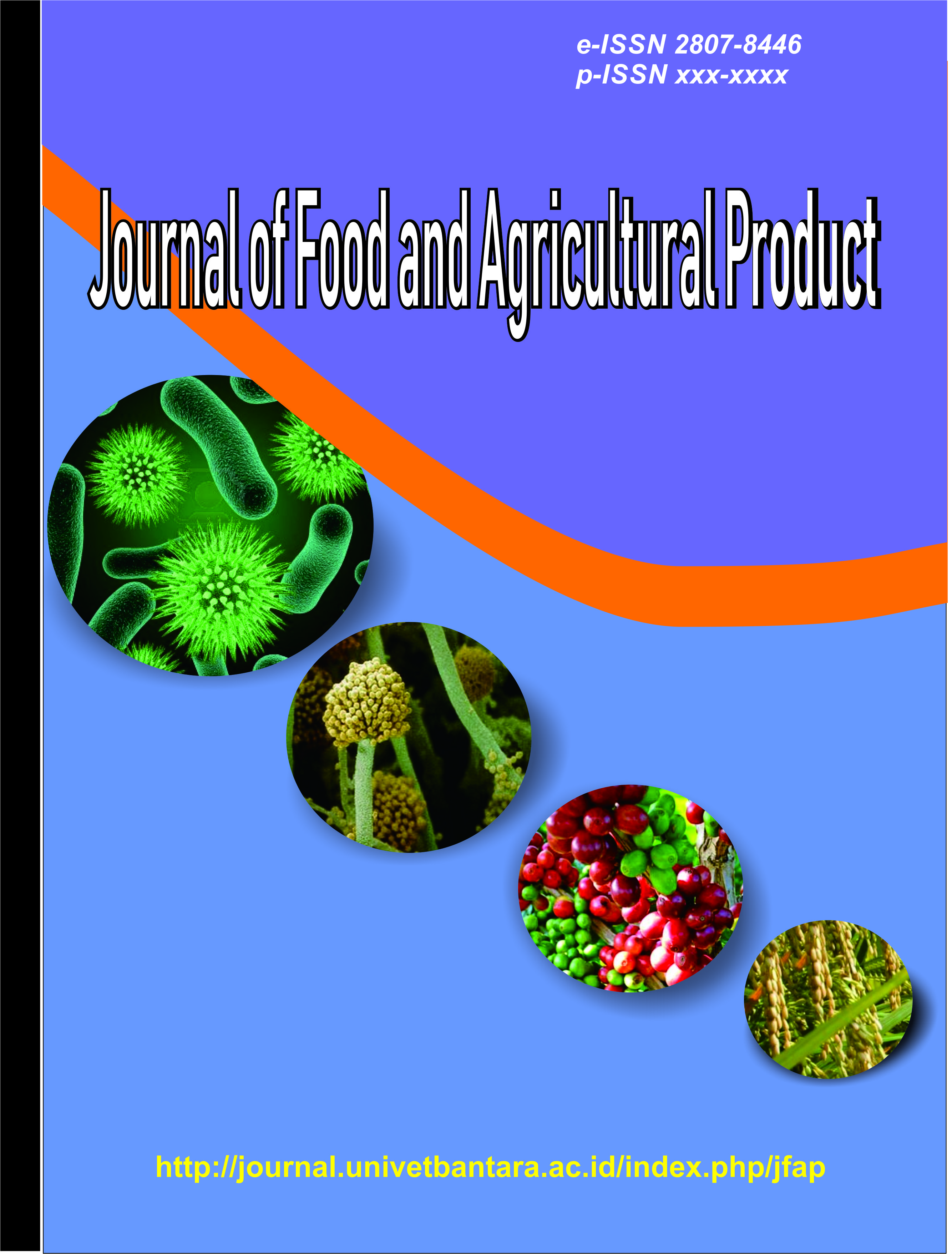Physicochemical Properties of Papaya Slice Jam (Carica papaya) with Variations Citric Acid Concentrations
DOI:
https://doi.org/10.32585/jfap.v5i1.6385Abstract
Papaya is included in the climacteric fruit that has a very short shelf life. This fruit is very much found around us. However, papaya has a very complete nutritional value. The decline in the quality of papaya goes hand in hand with the ripening phase of the fruit in the form of texture, taste, and color. Based on this basis, processing is needed to increase the shelf life and selling value of papaya. Innovations that can be done by reducing the moisture content of the product and making it into sheets. This sheet jam is commonly made by mixing fruit, sugar, hydrocolloids and acids. The factor that affects the formation of this sheet jam is acidity. Acids can affect the formation of gels and flavors in sheet jams. This study was carried out by analyzing the physicochemical properties of papaya sheet jam with the addition of citric acid. This study used citric acid levels of 0.5%, 0.75%, 1%, and 1.25%. The tests carried out include physicochemical analysis, namely texture (hardness), moisture content, total dissolved solids, and pH. The data obtained was analyzed using ANOVA. Based on the results of the study, it is known that variations in citric acid concentration have a significant influence on the results of physicochemical tests of papaya sheet jam, especially on moisture content, total dissolved solids, and pH. The higher the concentration of citric acid, the higher the value of the water content, TPT produced. However, the higher the concentration of citric acid added, the lower the texture value (hardness) and pH obtained.
Keywords: citric acid, carrageenan, papaya, sheet jam
Downloads
Downloads
Published
How to Cite
Issue
Section
License
Copyright (c) 2025 Amalia Wahyuningtyas, Masayu Nur Ulfa, Nama Tania J Hutasiot

This work is licensed under a Creative Commons Attribution-NonCommercial-ShareAlike 4.0 International License.




